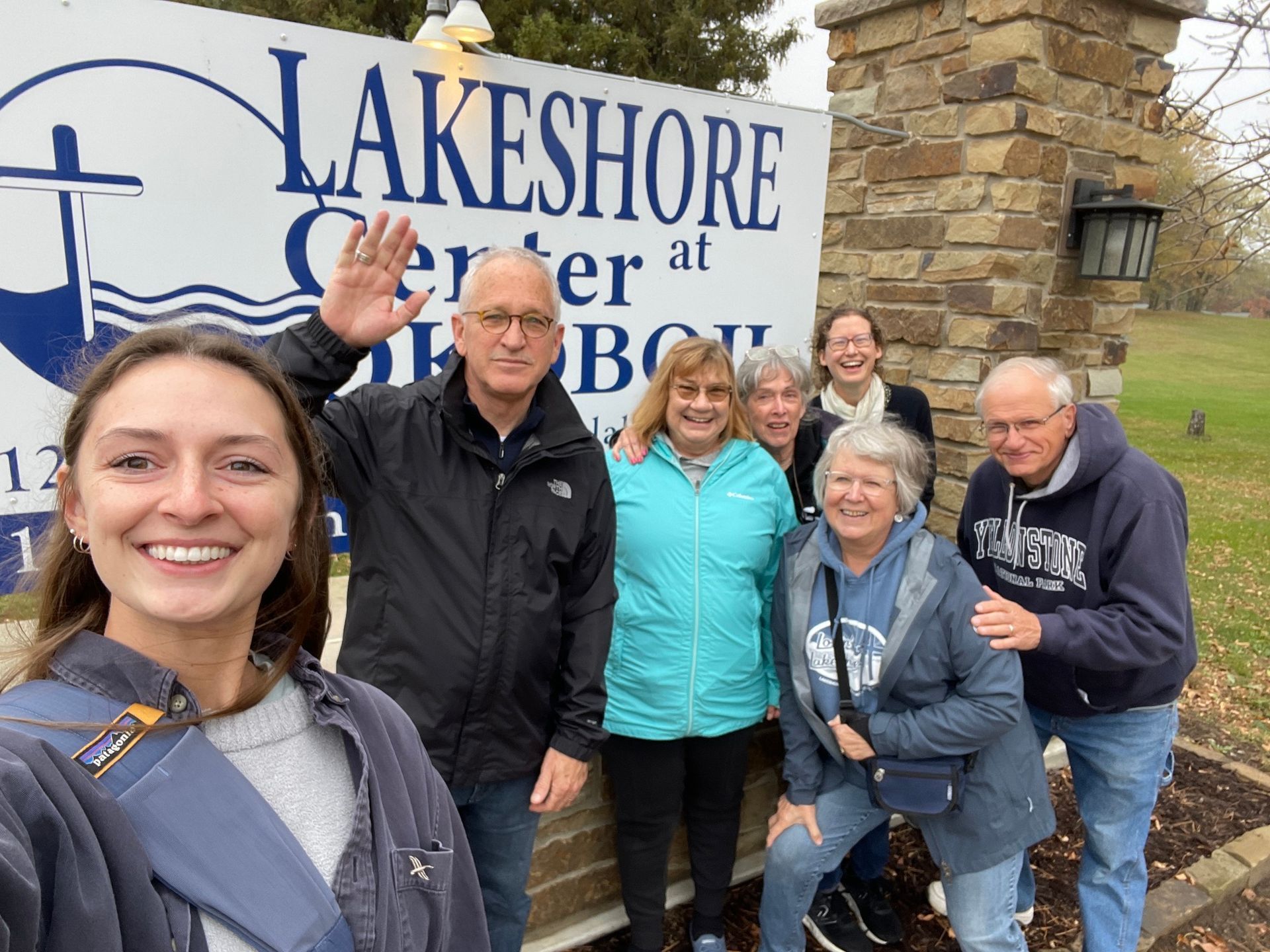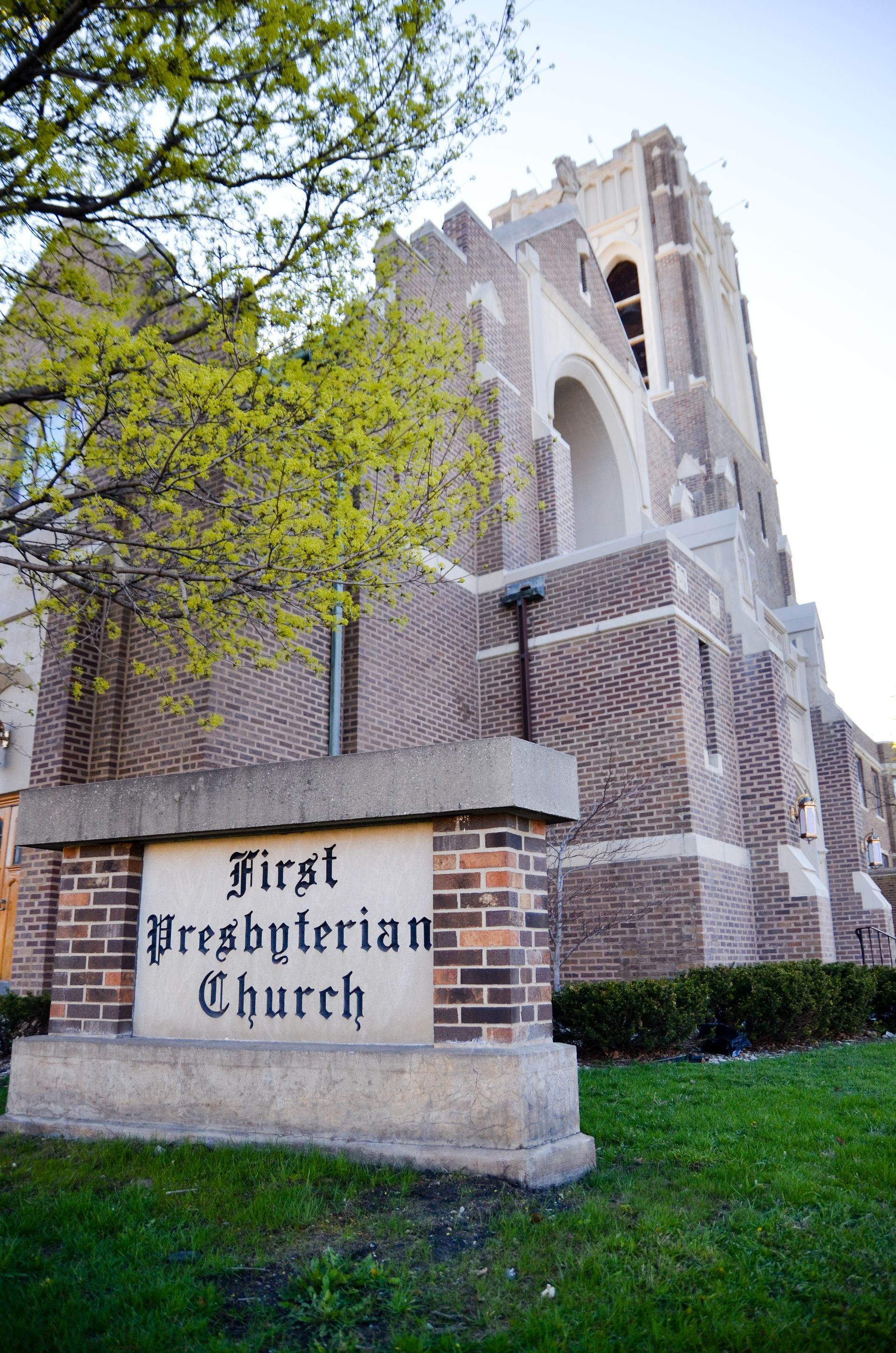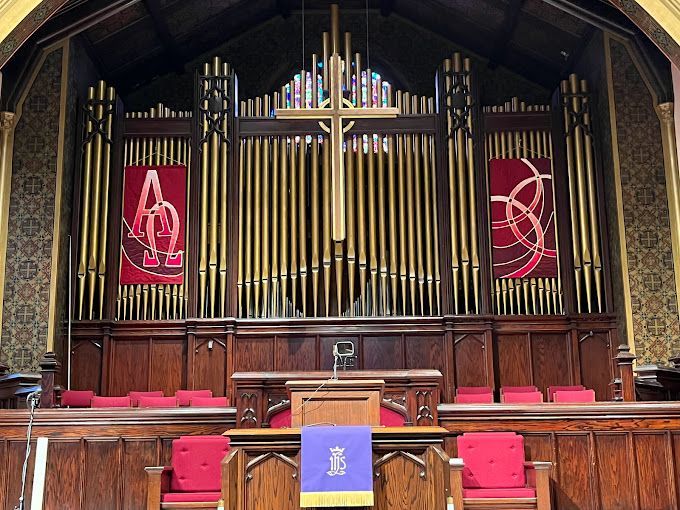Our history
a legacy of faith
our history and heritage
Rooted in faith and rich in history, First Presbyterian Church has been a cornerstone of worship, service, and community in Waterloo since 1854.
A Legacy of Worship and Growth
First Presbyterian Church has worshiped in four buildings since its founding in 1854. From humble beginnings with six Presbyterians meeting in a log cabin, the congregation grew rapidly. By 1857, they dedicated their first church building at Park Avenue and Jefferson, possibly the first church structure in Waterloo. When the current building was dedicated in 1923, membership had expanded to 800.
Architectural Beauty and Bells
Built in a Gothic style with buff brick and white stone, the church features a striking 80-foot tower housing a 14-bell carillon. These bells, including one that marks the hours, have long echoed through downtown Waterloo, playing hymns each Sunday before worship and daily at noon.
Sacred Spaces and Music
The sanctuary, with its stunning Gothic Revival stained glass and oak-beamed vaulted ceiling, seats nearly 500. Music has always been central to worship, led by a magnificent Skinner organ, originally installed in 1923 as a gift from the James Black Dry Goods Company. With 1,715 pipes and 27 stops, the organ remains a treasured part of church life.
A Rich Tradition of Faith and Mission
Beyond the sanctuary, the church includes the Dierenfield Chapel, Fellowship Hall, Calvin Hall, a gymnasium, classrooms, and offices. A notable part of its history is the “Boulder Church,” its third building, famously featured in Ripley’s Believe It or Not for being constructed entirely from a single massive stone. Today, First Presbyterian remains a thriving congregation, dedicated to Christian education, mission work, music, and inspiring worship.
Reformed & always being reformed
history of the presbyterian church, u.s.a
The Presbyterian Church (U.S.A), with denominational offices in Louisville, Kentucky, has approximately 1.1 million members, more than 8,500 congregations and 18,000 ordained and active ministers.
Presbyterians trace their history to the 16th century and the Protestant Reformation. Our heritage, and much of what we believe, began with John Calvin (1509-1564), whose writings crystallized much of the Reformed thinking that came before him.
The earliest Christian church consisted of Jews in the first century who had known Jesus and heard his teachings. It gradually grew and spread from the Middle East to other parts of the world, though not without controversy and hardship among its supporters.
During the 4th century, after more than 300 years of persecution under various Roman emperors, the church became established as a political as well as a spiritual power under the Emperor Constantine. Theological and political disagreements, however, served to widen the rift between members of the eastern (Greek-speaking) and western (Latin-speaking) branches of the church. Eventually the western portions of Europe, came under the religious and political authority of the Roman Catholic Church. Eastern Europe and parts of Asia came under the authority of the Eastern Orthodox Church.
In western Europe, the authority of the Roman Catholic Church remained largely unquestioned until the Renaissance in the 15th century. The invention of the printing press in Germany around 1440 made it possible for common people to have access to printed materials including the Bible. This, in turn, enabled many to discover religious thinkers who had begun to question the authority of the Roman Catholic Church. One such figure, Martin Luther, a German priest and professor, started the movement known as the Protestant Reformation when he posted a list of 95 grievances against the Roman Catholic Church on a church door in Wittenberg, Germany in 1517. Some 20 years later, a French/Swiss theologian, John Calvin, further refined the reformers' new way of thinking about the nature of God and God's relationship with humanity in what came to be known as Reformed theology. John Knox, a Scotsman who studied with Calvin in Geneva, Switzerland, took Calvin's teachings back to Scotland. Other Reformed communities developed in England, Holland, and France. The Presbyterian church traces ins ancestry back primarily to Scotland and England.
Presbyterians have featured prominently in United States history. The Rev. Francis Makemie, who arrived in the U.S. from Ireland in 1683, helped to organize the first American Presbytery at Philadelphia in 1706. In 1726, the Rev. William Tennent founded a ministerial 'log college' in Pennsylvania. Twenty years later, the College of New Jersey (now known as Princeton University) was established. Other Presbyterian ministries, such as the Rev. Jonathan Edwards and the Rev. Gilbert Tennent, were driving forces in the so-called "Great Awakening," a revivalist movement in the early 18th century. One of the signers of the Declaration of Independence, the Rev. John Witherspoon, was a Presbyterian minister and the president of Princeton University from 1768-1793.
The Presbyterian church in the United States has split and parts have reunited several times. Currently the largest group is the Presbyterian Church (U.S.A.), which has its national offices in Louisville, Ky. It was formed in 1983 as a result of reunion between the Presbyterian Church in the U.S. (PCUS), the so-called "southern branch," and the United Presbyterian Church in the U.S.A. (UPCUSA), the so-called "northern branch." Other Presbyterian churches in the United States include: the Presbyterian Church in America, the Cumberland Presbyterian Church and the Associate Reformed Presbyterian Church.
If you would like additional information on Our Beliefs and Practices, How We Are Governed, How We Are Organized, or other interesting facts, go to the PCUSA website:
https://www.pcusa.org.
stay up to date
Get the Latest
Receive weekly updates from the pastor, and get a heads up on upcoming events.







